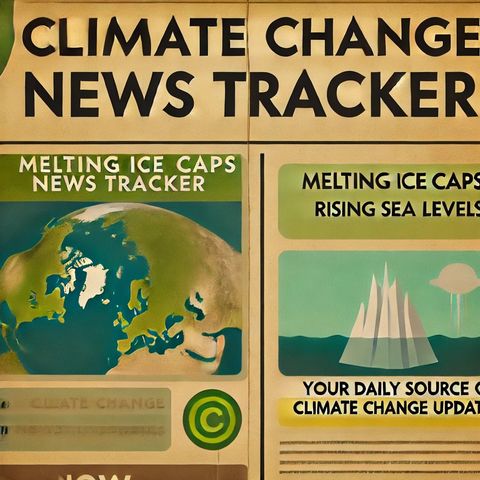Unraveling Earth's Climatic Past: How USGS Pioneers Paleoclimate Research for a Sustainable Future

Download and listen anywhere
Download your favorite episodes and enjoy them, wherever you are! Sign up or log in now to access offline listening.
Unraveling Earth's Climatic Past: How USGS Pioneers Paleoclimate Research for a Sustainable Future
This is an automatically generated transcript. Please note that complete accuracy is not guaranteed.
Description
The United States Geological Survey (USGS) stands as a cornerstone of paleoclimate research, hosting one of the largest and most multidisciplinary groups of scientists dedicated to exploring Earth's climatic past....
show morePaleoclimate research is pivotal in understanding how Earth's climate has changed over various geological periods. Through the study of ice cores, sedimentary records, tree rings, and other natural archives, USGS scientists unravel the environmental conditions that existed millions of years ago. This historical climate data is crucial in developing comprehensive models that enhance our understanding of contemporary climate dynamics.
The interdisciplinary nature of USGS’s team is a significant factor in their successful research endeavors. Comprised of geologists, climatologists, oceanographers, and biologists, the team works collaboratively, combining expertise from various fields to piece together the vast puzzle of Earth's climatic history. Each discipline adds a unique perspective, enabling a more holistic examination of data and leading to richer, more informed conclusions.
One of the remarkable contributions of USGS paleoclimate studies is their role in assessing and predicting climate trends and events such as El Niño and La Niña, monsoonal shifts, and glacial cycles. Scientists use historical climate patterns as a baseline to identify anomalies and tendencies in current climate behaviors, thereby informing relevant policy and aiding in disaster preparedness efforts.
USGS's research not only addresses past climate conditions but also emphasizes the connections between paleoclimate and current climatic challenges, such as global warming and sea level rise. By understanding the drivers and impacts of climate changes in Earth's history, researchers can better predict how current anthropogenic activities might influence future climate scenarios. This knowledge is invaluable in framing climate adaptation and mitigation strategies.
Further, the USGS is committed to enhancing public understanding and awareness of paleoclimate science. Through extensive publications, educational initiatives, and partnerships with academic institutions and government bodies, the USGS disseminates its findings, ensuring that critical insights reach both policymakers and the public.
In summary, the USGS is not just a repository of scientific exploration; it is a powerhouse driving the understanding of Earth's climatic past, present, and future. By uniting one of the most comprehensive and multidisciplinary teams of scientists, the USGS continues to push the boundaries of paleoclimate research, providing crucial knowledge that informs global climate action and resilience planning.
Information
| Author | QP-4 |
| Organization | William Corbin |
| Website | - |
| Tags |
Copyright 2024 - Spreaker Inc. an iHeartMedia Company

Comments